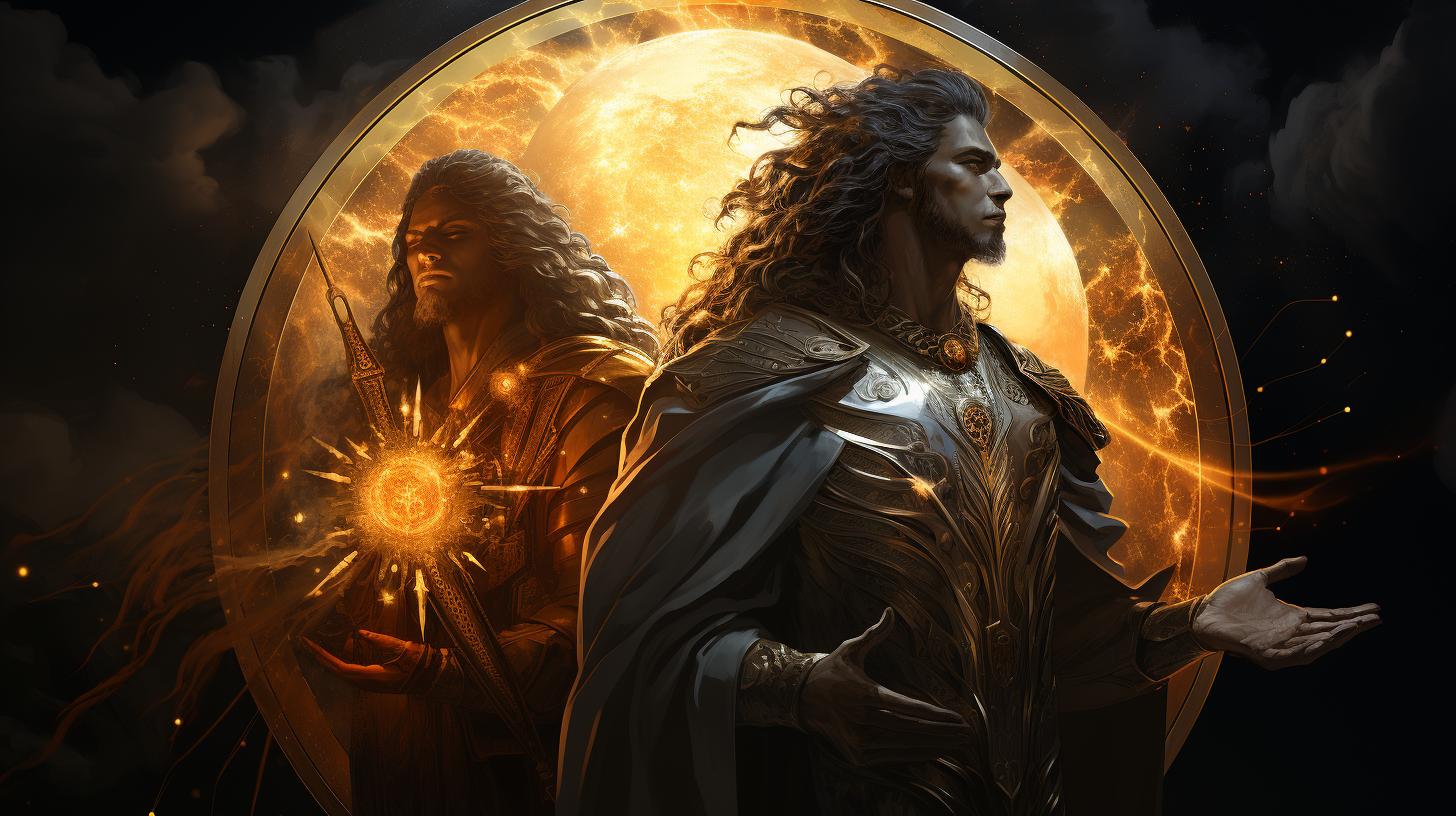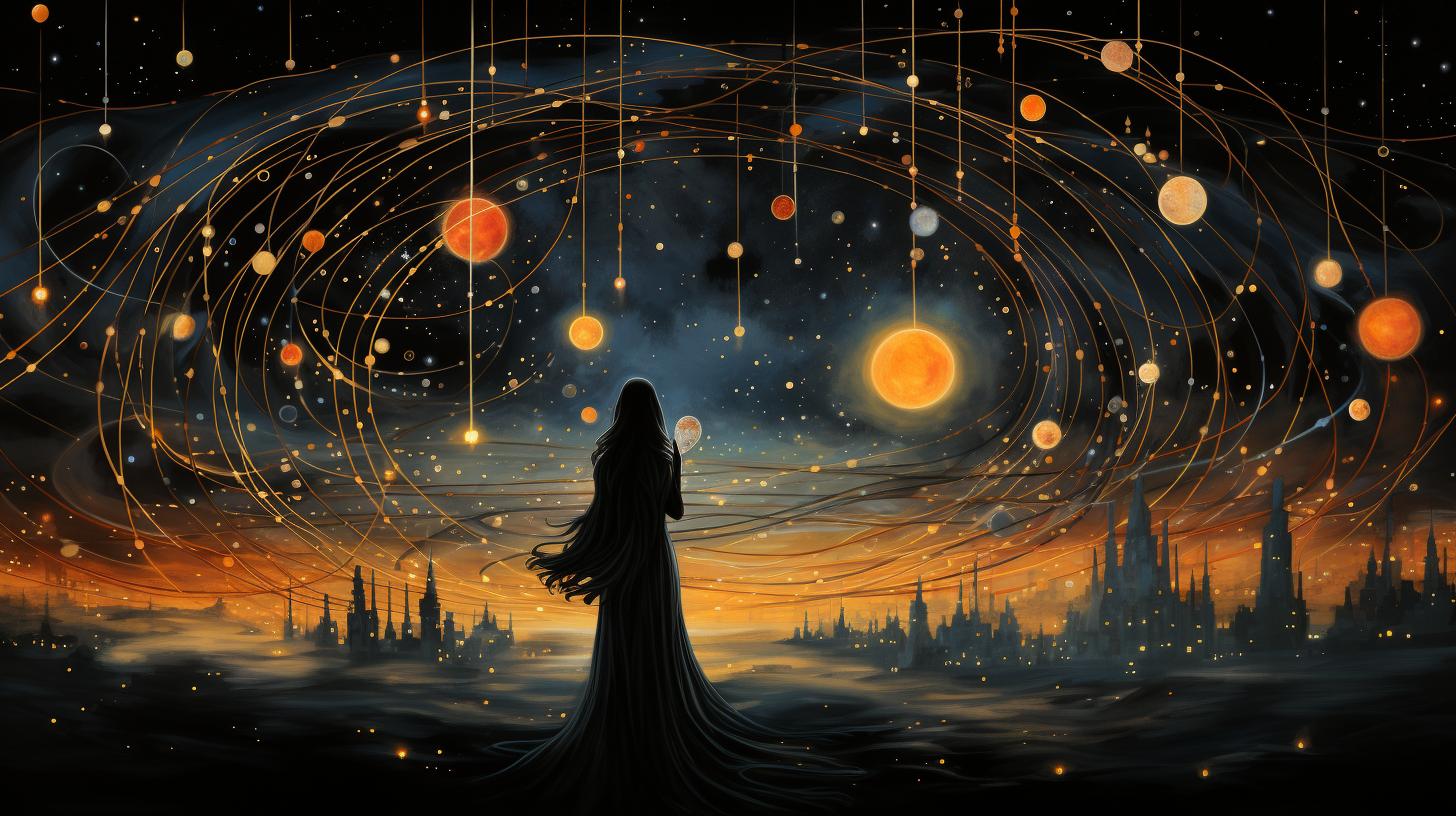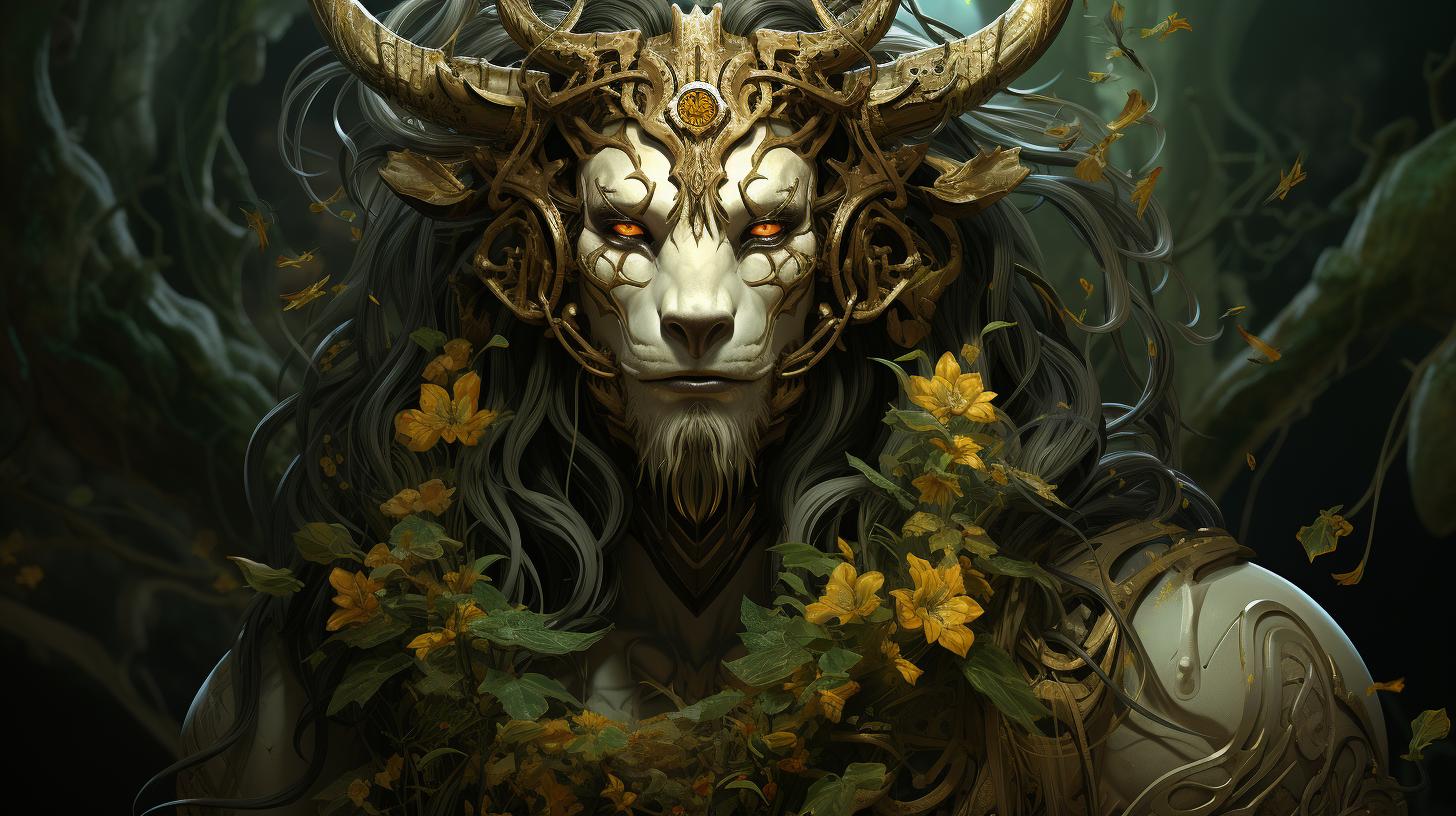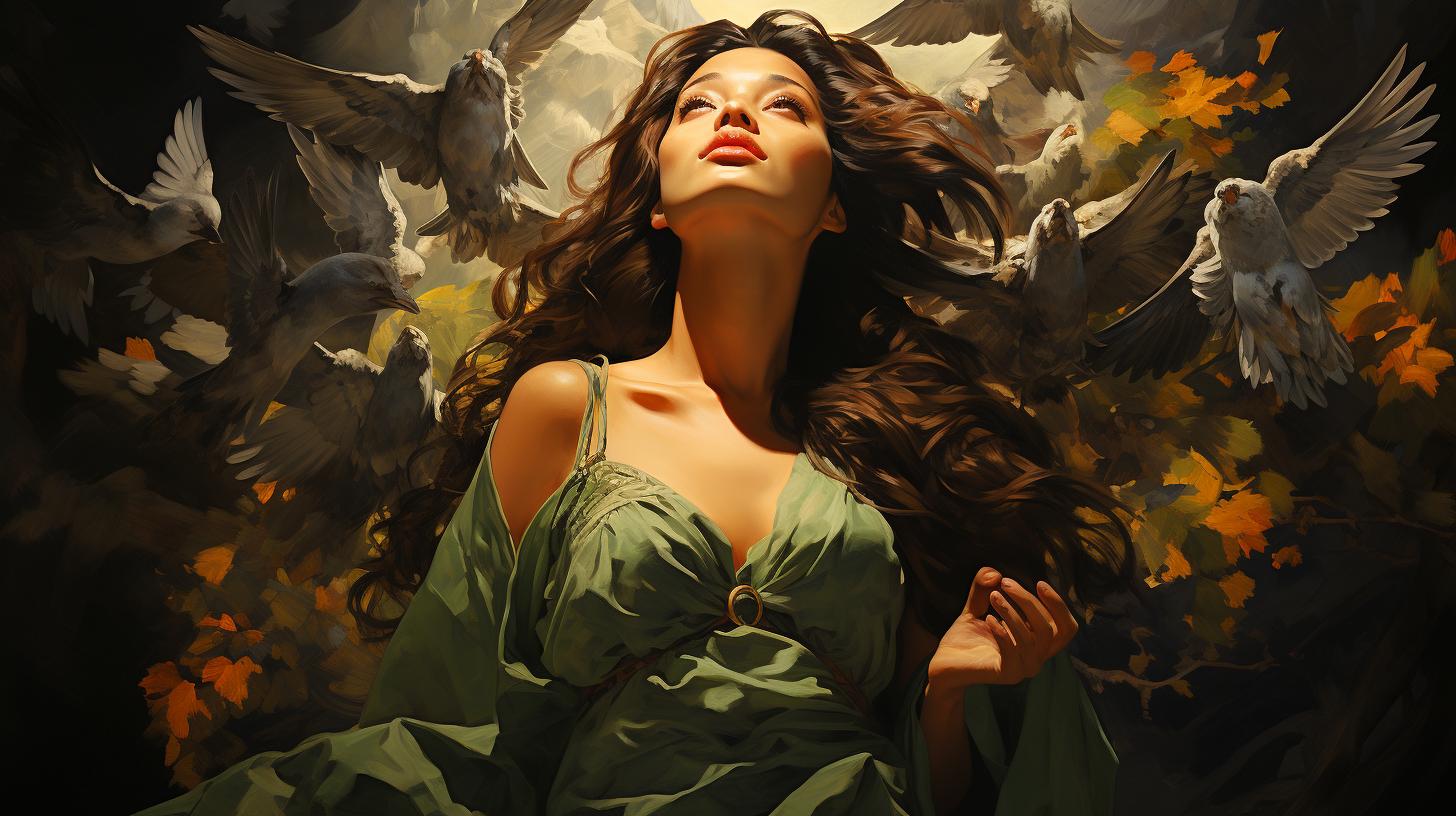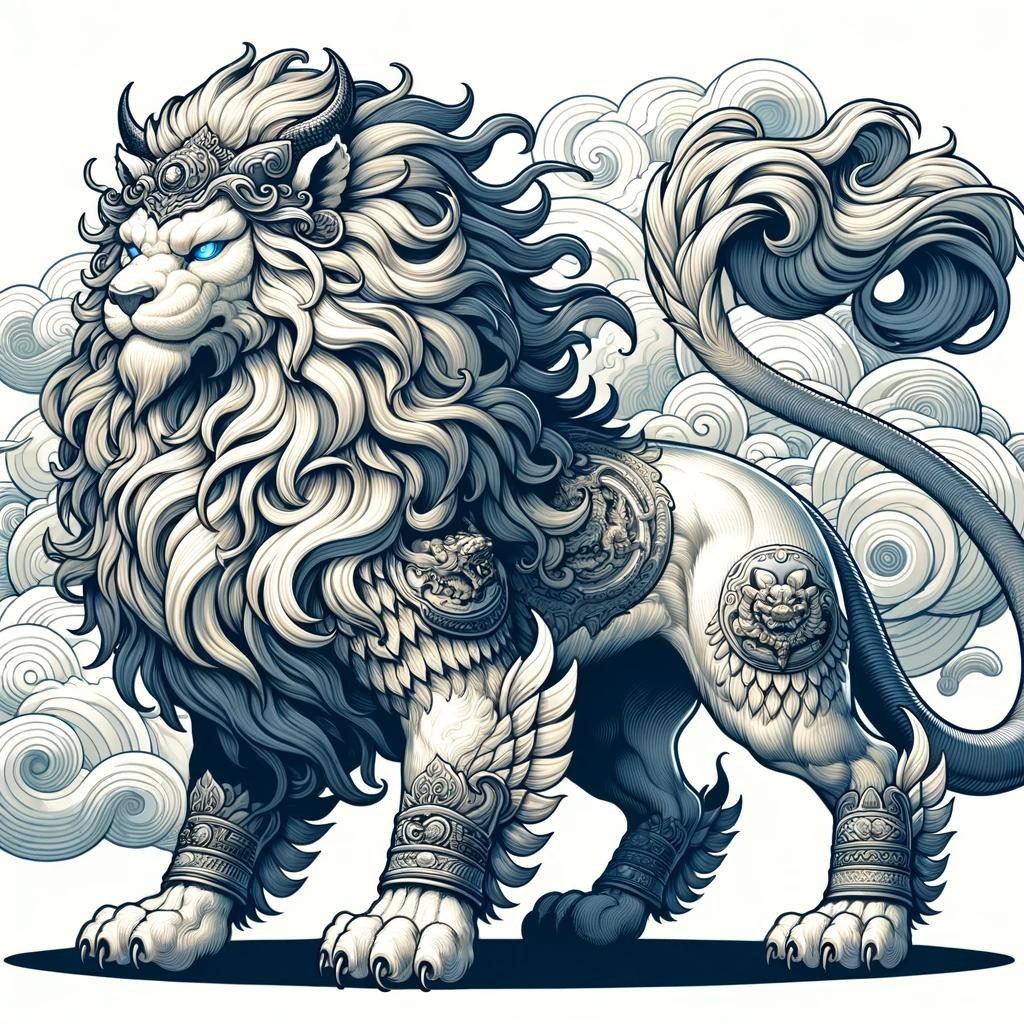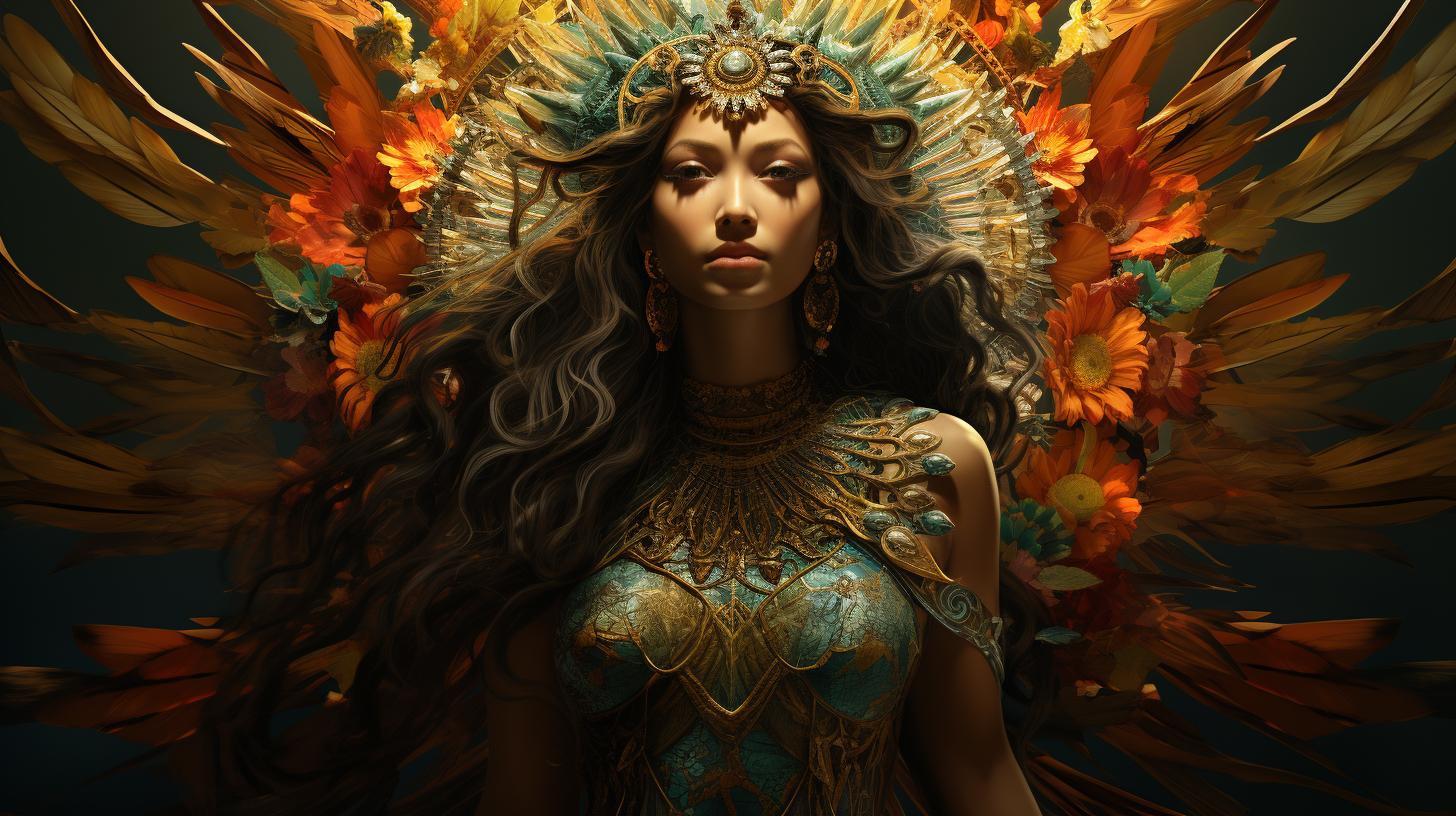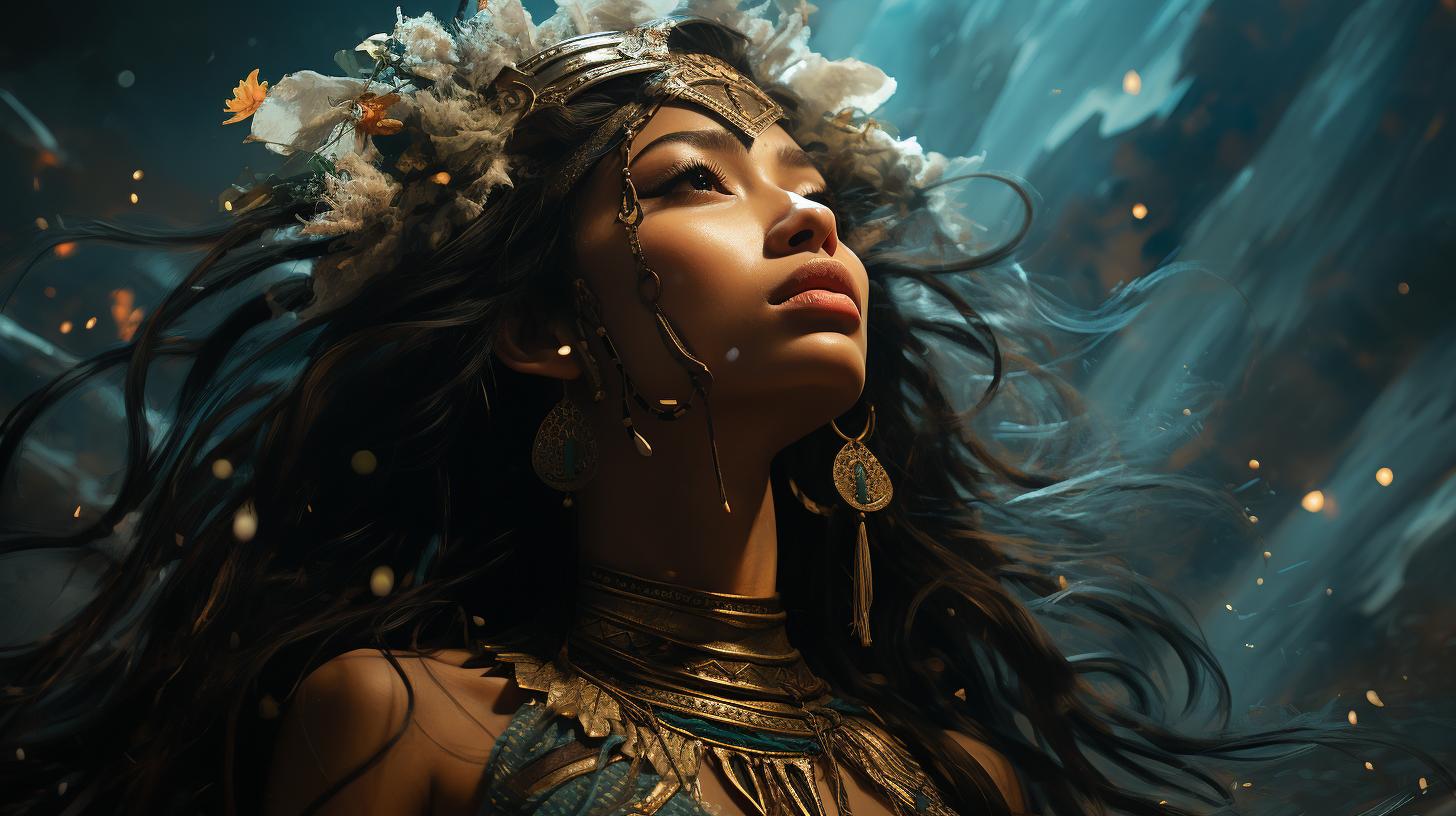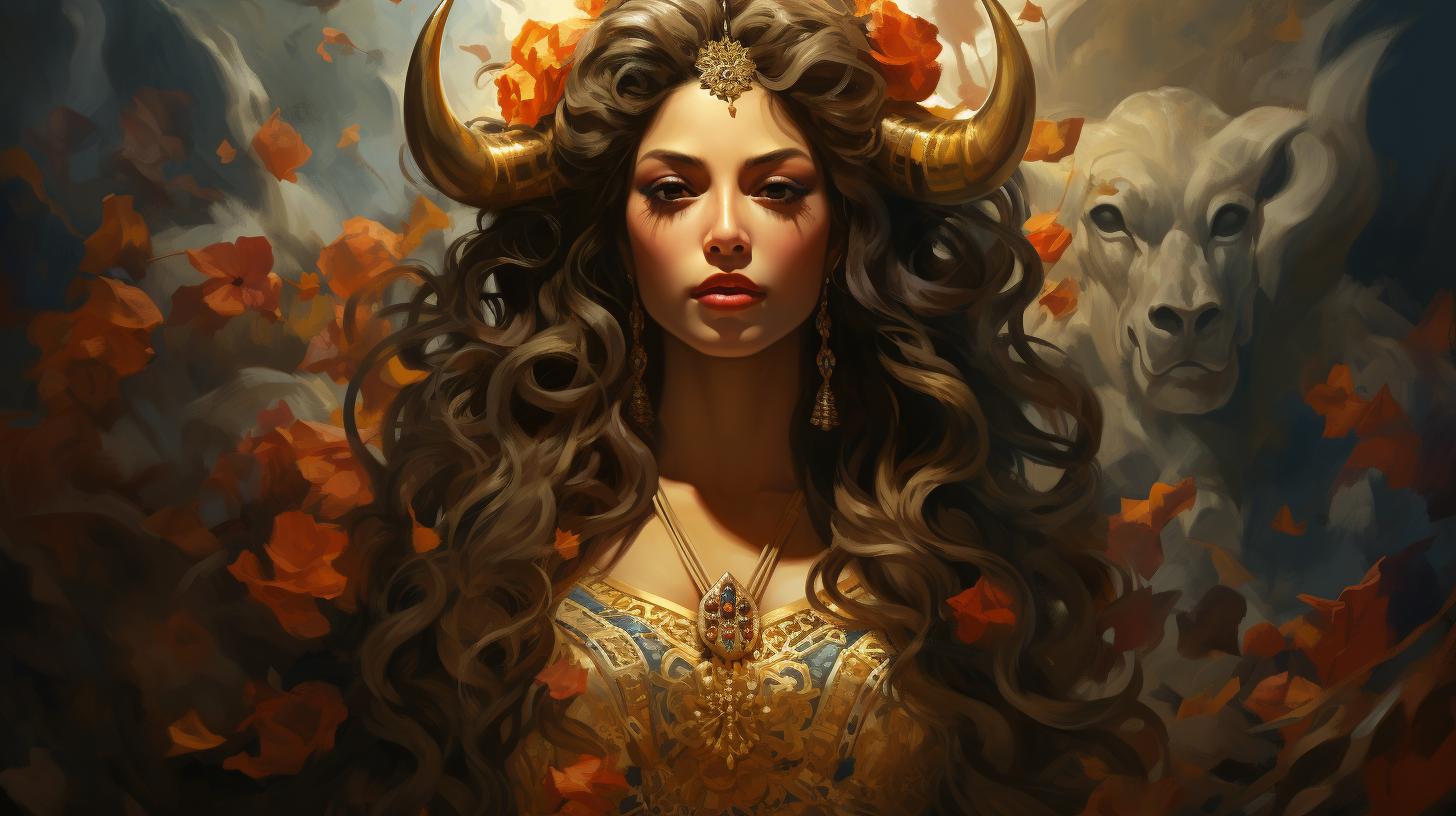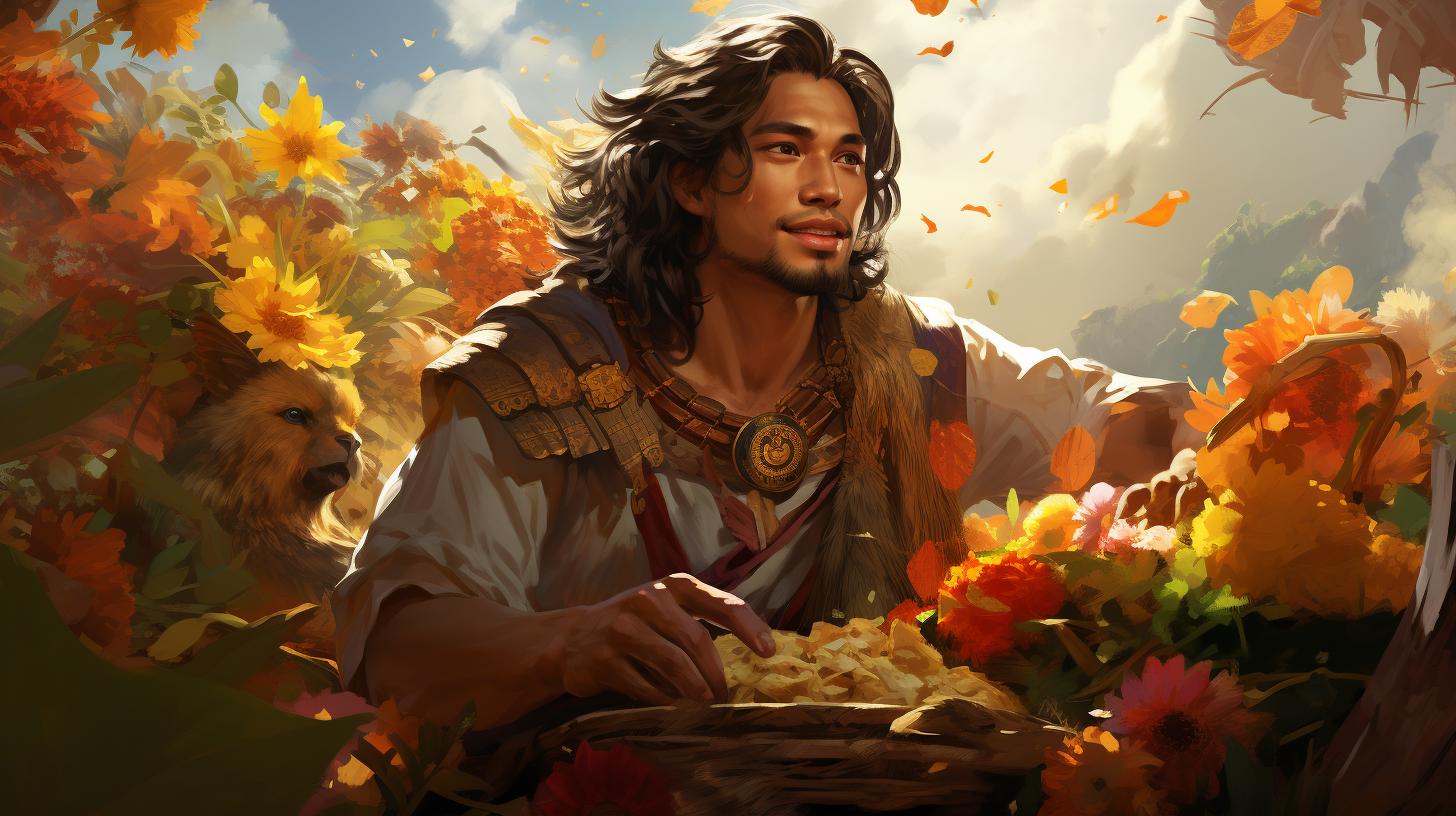‘Libulan Philippine Mythology: Exploring the Divine Figures and Tales’
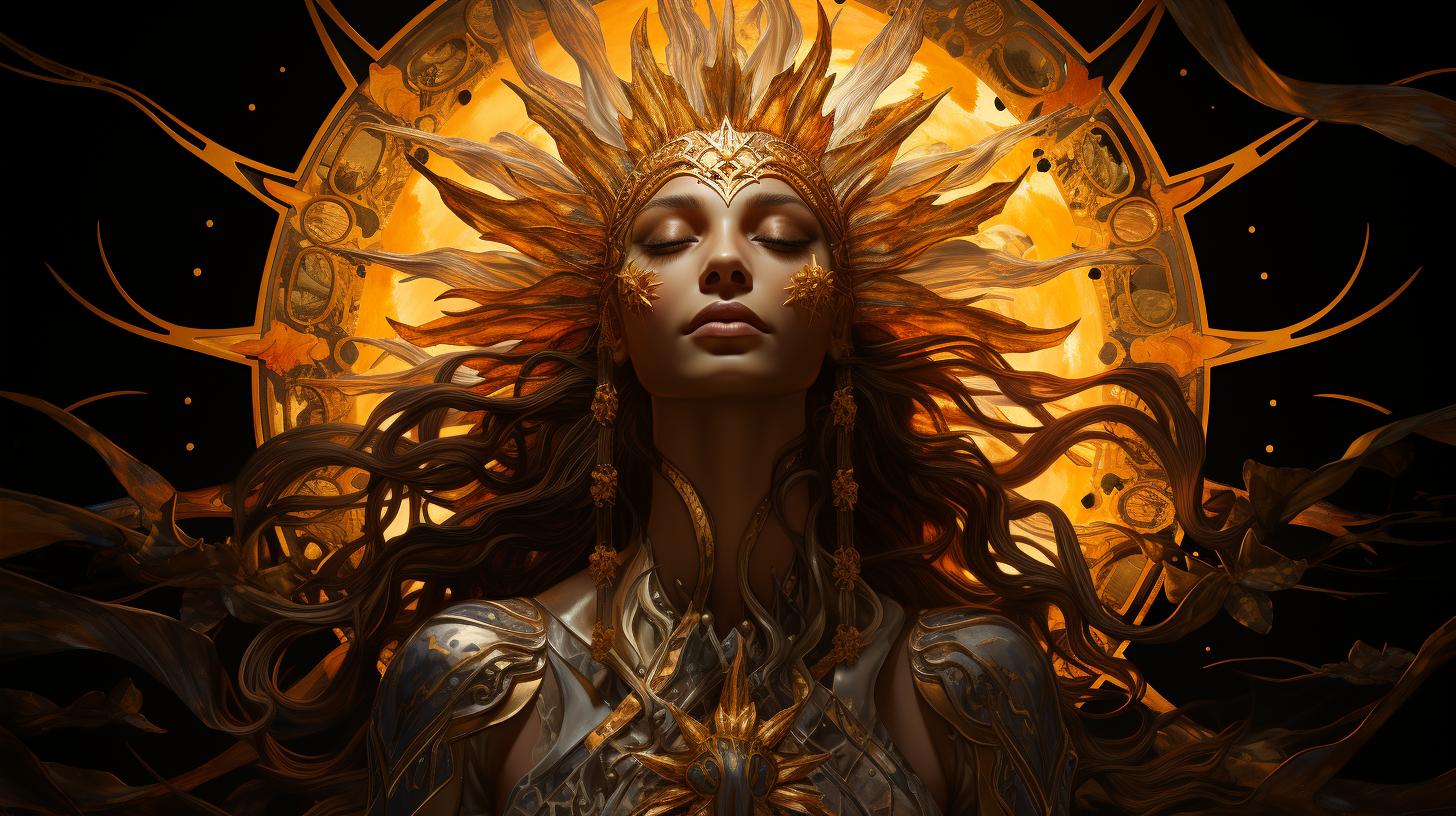
This article provides an overview of the fascinating world of Philippine mythology, with a particular focus on the deity Libulan/Bulan. We will explore Libulan’s significance in Philippine folklore, and examine the claim of Libulan as a patron deity of homosexuals.
Additionally, we will delve into the various myths, legends, and folklore associated with Philippine mythology, as well as its influence on society and the controversies surrounding Libulan. Lastly, we will discuss efforts to preserve and study Philippine mythology for future generations.
Overview of Philippine Mythology
The rich tapestry of Philippine mythology offers a captivating glimpse into the spiritual beliefs and cultural heritage of the diverse communities across the archipelago. This section provides an overview of Philippine mythology, exploring its intriguing tales, enchanting creatures, and profound symbols that have shaped the collective imagination of the Filipino people.
Introduction to Philippine Mythology
Philippine mythology is a treasure trove of stories, legends, and folklore that have been passed down through generations. Rooted in the indigenous belief systems, it reflects the deep spiritual connection Filipinos have with nature, ancestors, and supernatural beings.
These mythological narratives serve as a lens to explore the origin of the world, the interaction between gods and humans, and the moral values that guide human conduct.
Cultural and Ethnic Diversity in Philippine Mythology
One of the distinctive characteristics of Philippine mythology is its incredible diversity, representing the multitude of cultural and ethnic groups that inhabit the archipelago.
Each region and ethnic community has its own unique mythological traditions, gods, creation stories, and mythical creatures. From the Tagalog epics of the lowland regions to the Visayan tales of the central islands and the ancient beliefs of the Igorots in the mountainous Cordillera region, the mythology of the Philippines is a tapestry woven with vibrant cultural threads.
The cultural and ethnic diversity is evident in the vivid pantheon of deities, heroes, and supernatural beings that populate Philippine mythology. From the benevolent gods who govern natural phenomena to the mischievous spirits and enigmatic creatures lurking in the shadows, Philippine mythology is teeming with fascinating characters and creatures whose stories continue to captivate and inspire.
Libulan/Bulan: The Moon Deity
Libulan/Bulan holds a significant place in Philippine mythology, particularly as the deity associated with the moon. This section delves into the understanding of Libulan/Bulan in the rich tapestry of Philippine folklore, exploring its origins, characteristics, and symbolism.
Understanding Libulan/Bulan in Philippine Mythology
Libulan/Bulan is revered as a celestial entity in Philippine mythology, embodying the mystical and enchanting nature of the moon. Its portrayal varies across different regions and ethnic groups, with unique narratives and interpretations that contribute to the diverse fabric of Philippine folklore.
This subsection delves into the different aspects and representations of Libulan/Bulan throughout various mythological traditions.
Roles and Significance of Libulan/Bulan
Libulan/Bulan plays multifaceted roles within Philippine mythology, often associated with themes such as creation, fertility, and change. This subsection explores the significance of Libulan/Bulan in shaping the mythical narratives surrounding the cosmos, seasons, and life cycles.
Additionally, it examines the deity’s connection to natural phenomena, rituals, and the spiritual beliefs of different indigenous communities.
Evaluating the Claim of Libulan/Bulan as Patron Deity of Homosexuals
Amidst contemporary discussions, there have been claims suggesting that Libulan/Bulan is the patron deity of homosexuals in Philippine mythology. However, the veracity of this claim remains subject to scrutiny. This subsection examines the validity of such assertions, delving into the historical context and cultural perspectives surrounding the deity’s potential association with the LGBTQ+ community.
It aims to provide a critical evaluation of the claim’s basis and the implications of its adoption within both mythological interpretations and sociopolitical discourse.
Myths and Legends in Philippine Mythology
This section explores the rich tapestry of myths, legends, and folklore that make up Philippine mythology. From creation myths to stories of deities and heroes, these narratives showcase the diverse cultural and ethnic traditions across different regions and groups within the Philippines.
Creation Myths from Different Regions and Groups
The Philippines is home to numerous creation myths, each reflecting the unique beliefs and cosmologies of different regions and ethnic groups. These myths explain the origins of the universe, the earth, and humanity itself, often featuring gods, goddesses, and supernatural beings.
Examples include the creation myth of the Tagalog people, the story of Malakas and Maganda, and the creation tale of the Bicolano people, which centers around the primordial couple As’Ibuhan and As’Lihaya.
Stories of Deities and Heroes in Philippine Mythology
Philippine mythology is replete with captivating stories of deities and heroes who shape the world and interact with mortals. These tales showcase the cultural values, virtues, and moral lessons of different communities.
Examples include the epic tale of Lam-Ang, a warrior with extraordinary abilities, and the story of Tungkung Langit and Alunsina, the first divine couple in Visayan mythology. These stories often blend mythical elements with historical and cultural influences.
Folklore and Urban Legends Linked to Philippine Mythology
In addition to ancient myths and legends, Philippine folklore is enriched with captivating tales and urban legends that have been passed down through generations. These stories often incorporate supernatural creatures, such as aswang (shape-shifting monsters), tikbalang (half-human, half-horse creatures), and kapre (tree-dwelling giants).
Urban legends include the chilling encounters with the White Lady and the infamous mythical creature known as the Manananggal. These stories continue to captivate imaginations and shape the cultural fabric of the Philippines.
Influence of Philippine Mythology on Society
Philippine mythology has had a profound impact on the society of the Philippines, shaping beliefs, traditions, and cultural practices. The rich tapestry of myths and legends has contributed to the formation of Filipino identity and collective consciousness.
Within the societal framework, myths and beliefs have played significant roles in various aspects of life, from religious practices to moral codes and social norms.
Impact of Myths and Beliefs on Philippine Society
The influence of Philippine mythology can be observed in numerous aspects of society, including rituals, ceremonies, and festivals.
These cultural practices often revolve around mythological figures and tales, reinforcing their importance and relevance. Myths and beliefs provide a foundation for understanding the world, offering explanations for natural phenomena, human experiences, and the origins of society.
Furthermore, myths and beliefs have a profound impact on the moral fabric of Philippine society. These narratives often serve as parables, imparting moral lessons and teaching values such as respect for elders, compassion, and harmony with nature.
Additionally, they shape perceptions of good and evil, fostering a sense of justice and accountability within the community.
Modern Interpretations and Adaptations of Philippine Mythology
In the present day, Philippine mythology continues to evolve and adapt to the changing societal landscape. Modern interpretations and adaptations of these myths can be seen in various forms of media, such as literature, art, music, and film.
Artists and storytellers reinterpret mythological narratives, giving them new life and relevance for contemporary audiences.
These contemporary adaptations often serve as a bridge between the ancient past and the modern world, helping to preserve the cultural heritage while making it accessible to a wider audience.
They also contribute to the continuous evolution of Philippine mythology, allowing it to remain dynamic and vibrant in the face of globalization and cultural exchanges.
Libulan/Bulan and Representation in the LGBT+ Movement
Within the realm of Philippine mythology, the deity Libulan/Bulan has gained significant attention in relation to the LGBTQ+ community.
However, it is important to note that the historical and cultural context of Libulan/Bulan’s myths does not directly link the deity to homosexuality.
Nevertheless, in recent years, some individuals and organizations have adopted Libulan/Bulan as a symbol of inclusivity and representation within the LGBT+ movement.
The figure of Libulan/Bulan is seen as embodying the themes of love, acceptance, and embracing one’s true self, resonating with many members of the Philippine LGBTQ+ community.
However, it is crucial to approach these modern interpretations with an understanding of their context.
While Libulan/Bulan’s connection to the LGBT+ movement may contribute to promoting acceptance and equality, it is essential to recognize the complexities and nuances of Philippine mythology and not distort its original meaning.
In conclusion, Philippine mythology has exerted a profound influence on the society of the Philippines, shaping cultural practices, moral values, and artistic expressions. The myths and beliefs have provided a foundation for understanding the world and have evolved in response to the changing times.
However, it is crucial to approach modern interpretations and adaptations of Philippine mythology with an appreciation for its historical and cultural context, ensuring that the essence of these ancient narratives is preserved and respected.
Controversies and Misconceptions Surrounding Libulan/Bulan
Libulan/Bulan, the revered moon deity in Philippine mythology, has been a subject of controversies and misconceptions. This section aims to address and debunk misinformation regarding Libulan/Bulan, clarify misinterpretations of their role, and explore the intersecting realms of mythology, sexuality, and identity.
Debunking Misinformation about Libulan/Bulan
There have been various rumors and false claims surrounding Libulan/Bulan, particularly regarding their association as a patron deity of homosexuals. It is crucial to debunk such misinformation and establish an accurate understanding of the deity’s historical context and significance.
Addressing Misinterpretations of Libulan/Bulan’s Role
It is essential to address misinterpretations of Libulan/Bulan’s role in Philippine mythology. While some contemporary interpretations may portray Libulan/Bulan as a symbol for the LGBT+ movement, it is important to recognize the historical and cultural context of the deity and avoid imposing present-day perspectives onto ancient beliefs.

